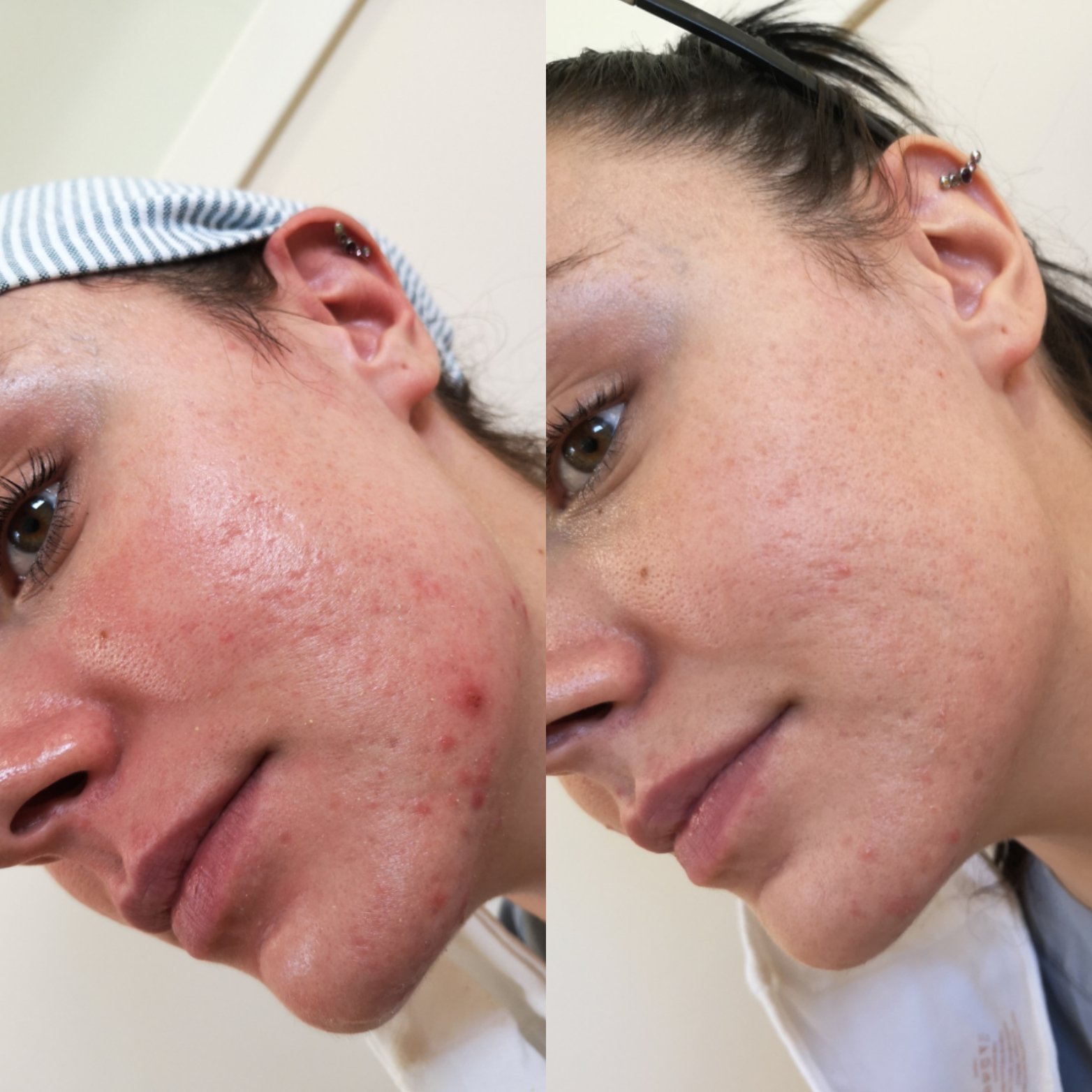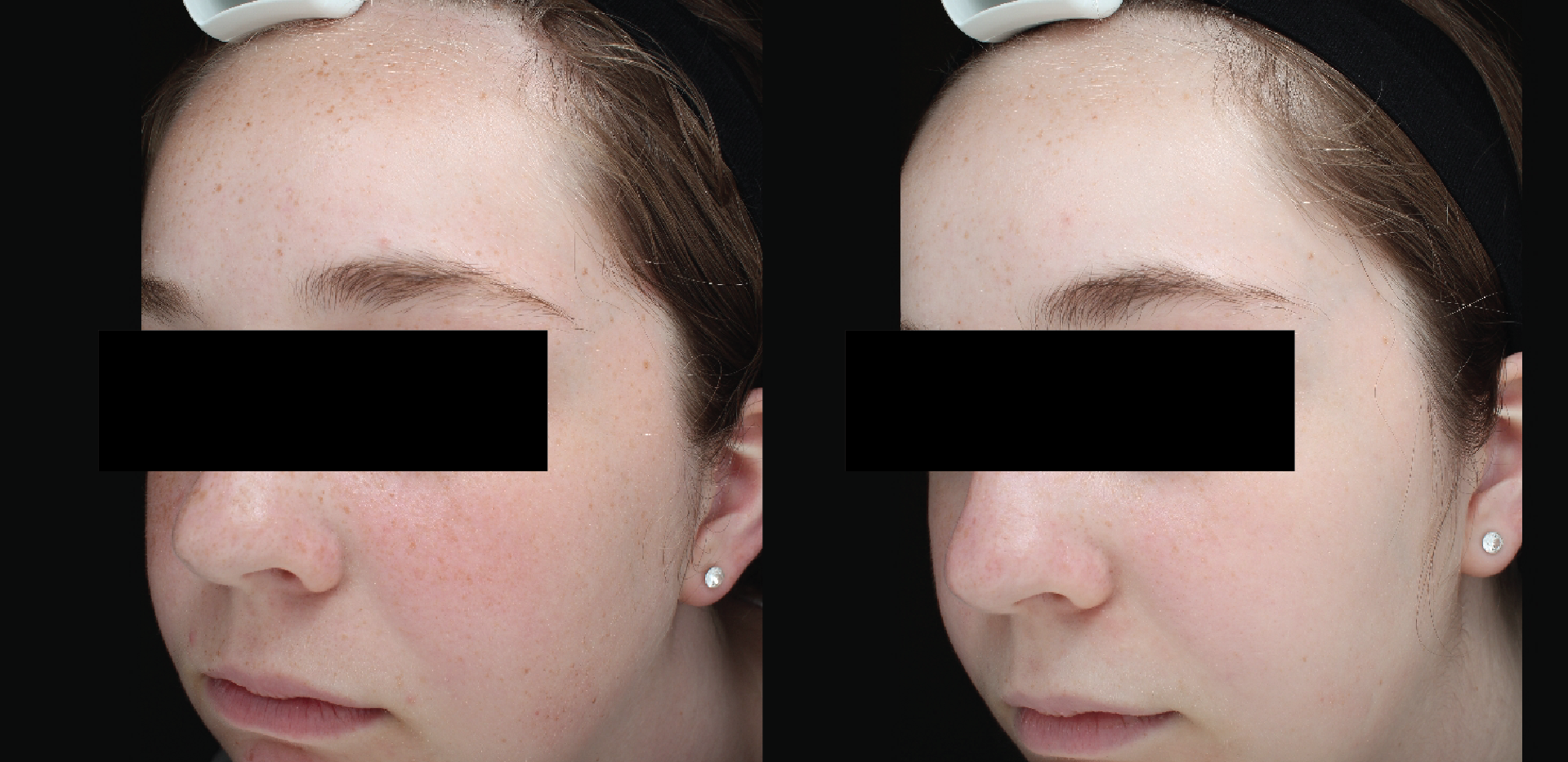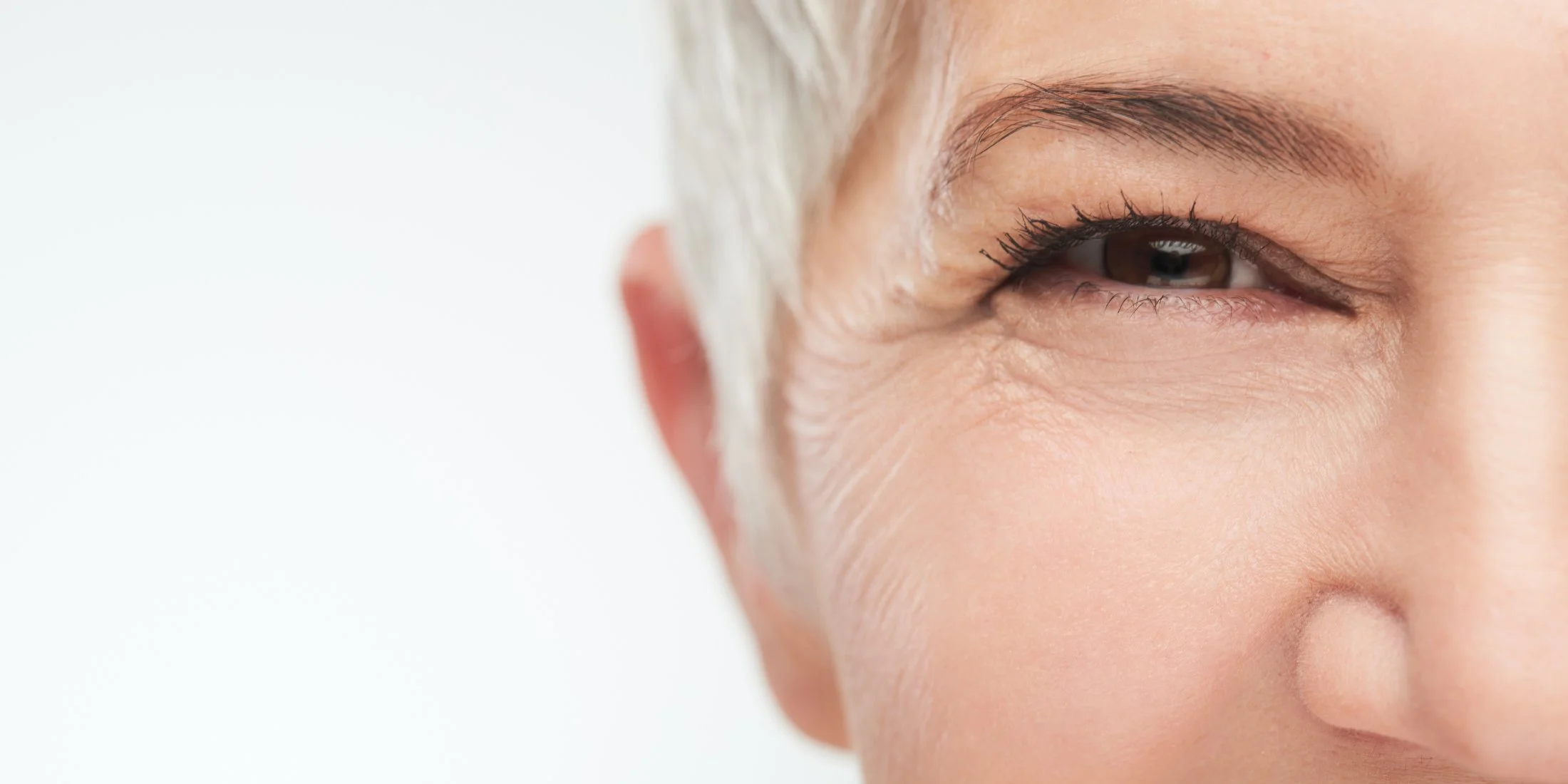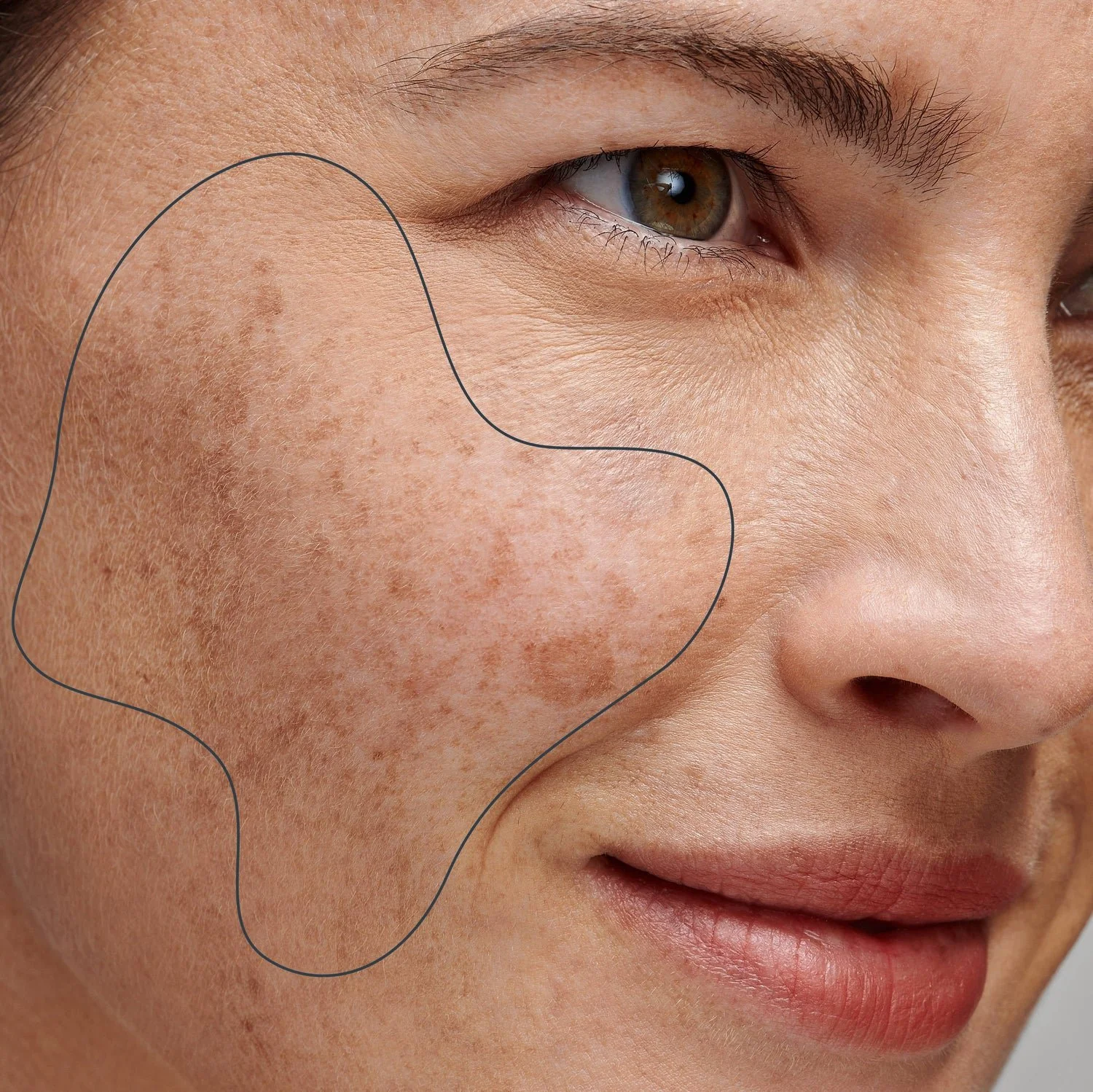
Chemical Peels
Shrink & Unclog Pores | Improve Acne & Congested Skin | Improve Skin Tone & Pigmentation | Tighten Fine Lines
What is a chemical peel?
Customized, medical-grade chemical peels employ pharmaceutical grade acids to exfoliate the epidermis thereby removing dead, dry skin cells to reveal softer, younger skin below.
Peels also unclog pores (thereby improving acne) , shrink pore size, improve congested skin, acne and blemishes, and irregular pigmentation. Repeated peels can also stimulate collagen production and improve skin texture.
What is the procedure for a chemical peel?
In a simple 30-to-60-minute appointment the skin is cleansed and prepped to receive an application of peel solution by one of our medical aestheticians. After a certain amount of time the acids in the peel are neutralized with a buffer. Once neutralized, the skin is cooled and protected with sunblock. Patients can easily return to regular activities.
In the 5 to 7 days before treatment, patients must discontinue all forms of topical vitamin A (retinol) and other abrasive treatment agents or any products containing alpha or beta hydroxy acids.
Begin your skin journey. Book a consultation with one of our medical aestheticians.



Conditions to treat with Chemical Peels
Chemical Peel FAQ’s & Important Info
-
The Chemical Peel was designed to remove superficial layers of skin, dry out active acne, dislodge blackheads, reduce shallow wrinkling and scarring, help lighten hyper pigmentation and improve the overall appearance and health of sun-damaged, acne prone, aging skin.
What to expect:
You may experience a warm, tingling or a burning sting during the application. You may take Ibuprofen prior to treatment to help relieve any discomfort. After application of peel, skin may appear white and frosted. This will subside in a few hours. During the next few days the skin may appear red and progressively deepen to a tan/brown color. Skin conditions during the peeling process may range from mild stinging, mild swelling and redness, mild crusting and possibly peeling. It is most common to experience a light exfoliation rather than peeling. It may take several treatments to target deeper of the skin. The skin can become very dry, tight and somewhat uncomfortable. You may notice exacerbation of acne after treatment. Results will vary with each client. It is recommended that you do not apply makeup the day of the treatment.
Prior to Treatment:
• Do NOT use Accutane 6 months prior to a chemical peel, during the treatment, and 6 months post peel.
• Prior or current use of Retin-A may increase sensitivity to the acids and intensifies the treatment. Suspend use of Retin-A/Tazorac and/or Vitamin A topicals at least 2 weeks prior to treatments.
• Advise your aesthetician if you have an allergy to aspirin, milk, Salicylic Acid, Lactic Acid and/or Resorcinol.
• Clients with a history of keloids or abnormal scarring should not be treated.
• Men should shave 12 hours prior to peel and not again until peeling is complete,
It Is Recommended that you take the following into consideration:
• for best results and to reduce the risk of complications, we recommended that you use pharmaceutical
grade care products 10 to 14 days prior to treatment
• if you are lactating, pregnant, or may be pregnant, consult your physician before receiving any treatment
• avoid sun exposure and tanning beds for at least two weeks prior to treatment
• discuss any prescription medications you may be on with your aesthetician prior to treatment
• Waxing, depilatories or laser 2 weeks prior to the peel, and two weeks after the peel.
• Certain Chemical peels may not be appropriate for skin types 4-6
• Smokers who cannot refrain from smoking for the first 8 days of treatment will have slower healing time
If you have an active infection or certain diseases avoid chemical peels, including but not limited to:
• Active Herpes/ Cold sores, inactive only if on oral RX prior and during tx
• Eczema (inflamed or dormant)
• Rosacea
-
NB: You have been provided a post care kit containing wash, recovery balm and sunblock. Use only these products to wash, moisturize and sun protect for 7 days post procedure or until they run out.
AVOID direct sun exposure and excessive heat for 2 weeks.
Discontinue the use of any product that irritates your skin. Keep your skin hydrated. Hydration is the key to proper healing.
DO NOT cleanser your skin the evening of your peel.
DO NOT pick or pull any flaking skin.
DO NOT tan or use a tanning both for at least 14 days post peel.
DO NOT have electrolysis, waving, threading or any other form of hair removal for 7 days post treatment.
DO NOT use facial scrubs or mechanical forms of exfoliation for 14 days post peel.
DO NOT use retinoic acid, AHA or BHA for 14 days post peel.
DO NOT have laser hair removal, photofacial (IPL or BBL, chemical peels or microdermabrasion for 14 days post peel.
DO NOT apply ice or ice water on the treated area.
DO NOT us hot tubs, steam rooms, saunas, and/or excessively hot showers for 2 days post peel.
DO NOT participate in aerobic exercise or hot yoga for 2 days post peel.
DO NOT use makeup on your skin until peeling/ flaking is complete.
DO NOT use any aloe-based products, as these may cause unnecessary discomfort to the skin.
If you have any concerns or questions about chemical peels, or your treatment please contact the clinic
-
A chemical peel is a treatment used to improve skin texture and tone. An acid is applied to skin to lower the pH, which loosens the connections between dead skin cells, inducing exfoliation and stimulating new cell growth. This process causes superficial layers of dead skin to peel off, revealing a smoother and more radiant complexion. Chemical peels can also thicken the epidermis, increase dermal volume and stimulate collagen.
Chemical peels have been used dating back to Ancient Egypt. Cleopatra used sour milk to improve the appearance of her skin, according to some sources. Lactic acid (an alpha hydroxy acid) is the active ingredient in sour milk.
-
Chemical peels are classified as light (superficial), medium, or deep, depending on the depth of penetration of the ingredients used. Light peels exfoliate to various levels of the epidermis. Medium-depth peels treat through the papillary dermis and deep peels to the mid-reticular dermis. Deeper peels require more downtime and increase the chance of side effects, which include photosensitivity, pigment changes and scarring.
-
We offer light- to medium-depth peels known for their excellent results and safety profile. We believe in repeated treatments for progressive and gradual results, and to avoid the side effects and downtime associated with deeper peels. Chemical peels should be performed by a trained skin care professional in a clinical setting so that they are delivered safely and effectively.
Chemical peels work by deeply exfoliating the surface layers of skin forcing your body to quickly replenish it with new cells. When peels are performed regularly, the skin gets used to this process and begins to rejuvenate itself like younger skin. To be sure that the body doesn’t react to this deep exfoliation as it would to trauma, which can lead to pigment changes, exfoliation must be introduced gradually giving the skin time to adjust.
Your skin care specialist will complete a thorough skin analysis and recommend an individualized treatment program to address your skin concerns. They will create a personalized program that combines professional treatments with home care products since they work synergistically to improve the health and beauty of skin. Pre-treatment products precondition the skin, accelerate results and minimize complications. Post-treatment products minimize complications, heal and soothe the skin and then maintain the results. Professional treatments enhance the results of your home care products.
-
Most beneficial ingredients for the skin tend to degrade or denature when placed in the low pH of chemical peel formulas. With that scientific information in mind, AlumierMD peels use only the pure acids; anti-aging, antioxidant and brightening booster ingredients are applied post-peel in our Bright- ening Accelerator keeping all components effective.
Peels remove the outer dead layers of the stratum corneum, so the booster ingredients are better absorbed when applied post-peel. Our multilayer process can be customized by your skin care professional according to your skin profile and concerns.
-
Chemical peels are usually performed on the face, but may also be used on the neck, décolleté and hands.
-
Peel treatments improve skin texture and firmness, decreasing fine lines and wrinkles. Peels also even out skin tone, improve acne-prone skin and reduce pore size appearance.
-
Some common peeling ingredients include alpha hydroxy acids, beta hydroxy acids, trichloroacetic acid (TCA) and retinol. Alpha hydroxy acids include glycolic acid (from sugar cane), lactic acid (from milk), citric acid (from oranges and lemons), malic acid (from apples and pears), tartaric acid (from grapes) and mandelic acid (from bitter almonds). Salicylic acid is the only beta hydroxy acid. The strength of a chemical peel is determined by the type of ingredients used, their concentrations and the pH of the formulation.
Not all peels are created equally, and one peel type doesn’t suit all. Certain ingredients may be more effective for treating acne, while others may be more successful in treating hyperpigmentation or the signs of aging.
-
AHA peels work by reducing sulfate and phosphate groups from the surface of corneocytes to decrease corneocyte cohesion leading to exfoliation of epidermal cells. BHA peels are lipid soluble allowing deeper penetration into the follicle. As well, BHAs have anti-inflammatory properties and are able to neutralize bacteria. These properties make BHAs ideal for acne. BHAs work as both keratolytic and comedolytic agents by causing cells of the epidermis and in the follicle to shed, clearing the pores and allowing room for new cell growth.
-
Like a chemical peel, an enzyme peel is also a treatment used to improve skin texture and appearance. Enzymes are applied to skin, which loosen the connections between dead skin cells, inducing exfoliation and stimulating new cell growth. This process causes superficial layers of dead skin to peel off, revealing a smoother and more radiant complexion. Enzyme peels both nourish and exfoliate the skin and are usually made with fruit enzymes. The most popular fruit enzymes are papain, found in papayas, and bromelain, found in pineapple.
One of the most common questions we get at ArtMed is ‘is there anything you can do about my dark undereye circles?”
There are a variety of reasons for dark undereye circles:
Thinning skin in the eye area makes hollows seem more pronounced leading to shadows
Thin skin allows darker blood vessels underneath to be seen
Sun damage
Pigmentation in the skin due to
medical issues
familial tendency
melasma
The ideal treatment for dark circles would reduce pigment in the skin and boost skin quality while also treating the entire eye area including eyelids.
Chemical peels are ideally suited to this purpose and ArtMed is pleased to now offer Mesopeel® Eyecon Periocular Peel from Nuvior – the experts in skin discolouration management.
Why Mesopeel Eyecon?
Specifically formulated for the periorbital area, which includes the eyelids, under-eye circles, and crow’s feet
gentle enough to treat the thin and sensitive skin of the eye area
effectively addresses pigmentation, thinning skin and wrinkles
benefits of chemical exfoliation with active ingredients that promote skin regeneration and revitalization
healthier thicker skin improves masking of dark vessels below skin
Like any chemical peel a series of treatments are recommended. Typically, this will range from 3 to 6 treatments done 2 weeks apart for optimal results. The darker your under-eye pigment and skin colour the more likely you may need 5 to 6 peels for optimal results. A single maintenance treatment every 6 to 9 months is recommended to maintain results.
Before and After Mesopeel Eyecon Periocular Peel:










